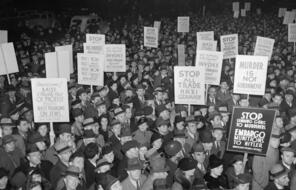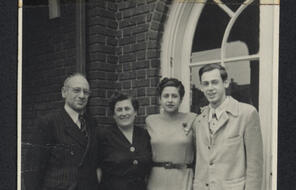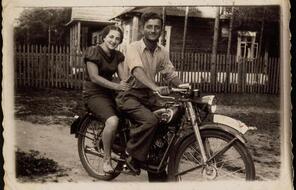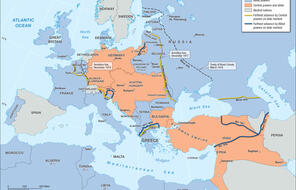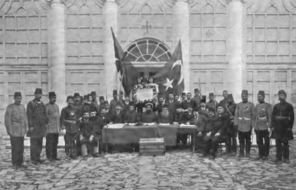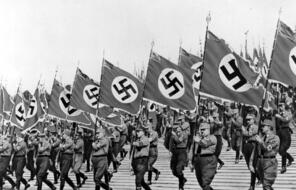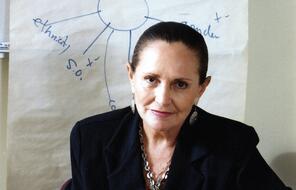Establishing the Nuremberg Tribunal
Subject
- Civics & Citizenship
- History
- Social Studies
Language
English — USUpdated
Nuremberg Remembered
In June 1945, after Germany’s surrender, delegations from the four Allied powers—the United States, Great Britain, France, and the Soviet Union—met in London to write a charter. It established an international tribunal, or court, that would be responsible for conducting trials of Germany’s leaders. Article 6 of the charter described the jurisdiction, or authority, of the tribunal:
The following acts, or any of them, are crimes coming within the jurisdiction of the Tribunal for which there shall be individual responsibility:
- CRIMES AGAINST PEACE: namely, planning, preparation, initiation or waging of a war of aggression, or a war in violation of international treaties, agreements or assurances, or participation in a common plan or conspiracy for the accomplishment of any of the foregoing;
- WAR CRIMES: namely, violations of the laws or customs of war. Such violations shall include, but not be limited to . . . murder, ill-treatment of prisoners of war or persons on the seas, killing of hostages, plunder of public or private property, wanton destruction of cities, towns or villages, or devastation not justified by military necessity;
- CRIMES AGAINST HUMANITY: namely, murder, extermination, enslavement, deportation, and other inhumane acts committed against any civilian population, before or during the war; or persecutions on political, racial or religious grounds in execution of or in connection with any crime within the jurisdiction of the Tribunal, whether or not in violation of the domestic law of the country where perpetrated.
Leaders, organizers, instigators and accomplices participating in the formulation or execution of a common plan or conspiracy to commit any of the forgoing crimes are responsible for all acts performed by any persons in execution of such plan.
Nuremberg after Allied Bombing
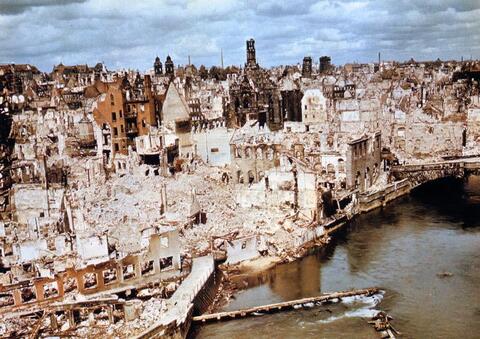
Nuremberg after Allied Bombing
Nuremberg in August 1945, showing the effects of Allied bombing during World War II. The first Nuremberg trial began in this city three months later.
Nuremberg and Tokyo: Foundations of International Law
Article 8 of the charter discussed a possible defense argument that might be used by the accused:
The fact that the Defendant acted pursuant to order of his Government or of a superior shall not free him from responsibility, but may be considered in mitigation of punishment if the Tribunal determines that justice so requires.
Article 9 declared that organizations could also be declared to be criminal, meaning that any member of that organization could be brought to trial for war crimes. 1
Most individuals who had participated in the war and mass killings would never be brought to trial. Instead of trying to prosecute everyone who played a part, the tribunal decided to focus on the most prominent Nazi leaders. But among the top Nazis, Adolf Hitler and Joseph Goebbels, the minister of propaganda, had died by suicide shortly before the Nazi surrender. Heinrich Himmler, the head of the SS who was in charge of implementing the “Final Solution,” had tried to escape, but after being discovered and captured, he too killed himself. In October 1945, the tribunal identified and indicted, or charged, 24 of the remaining top Nazi officials for one or more of the crimes described in Article 6 of the charter. One of the 24, Robert Ley, the head of the Nazi labor movement, died by suicide before the trials began. And the tribunal ruled that Gustav Krupp, an industrialist, was too ill to stand trial. The remaining individuals were imprisoned in Nuremberg, the German city in which the trials were to be held, and were given the opportunity to choose their own lawyers and to prepare their defense.
Even as the Allies were preparing the charter for the tribunal, some people argued that it was unfair to indict Nazi leaders for violating laws that had not yet existed at the time they committed the acts of which they were accused. This is called ex post facto (“after the fact”) justice, and it is specifically forbidden by the US Constitution and the laws of many other nations. The Hague conferences that had defined rules of war in 1899 and 1907 had not imposed any limitation on a nation’s right to go to war. Therefore, to indict an individual German leader after World War II for waging a war of aggression (Article 6a) could be seen as ex post facto.
The accusation, under Article 6, that German leaders had engaged in a conspiracy to commit crimes against peace, war crimes, and crimes against humanity also created some disagreement. In a conspiracy, a group of people plot together to commit a crime. As in many legal systems, Article 6 of the Nuremberg tribunal charter states that each member of a conspiracy is responsible for any crimes committed by any of its members. The American delegation at Nuremberg believed that some German actions that had been taken before the war began could be defined as a conspiracy: they argued that the invasions of Poland and other countries and the murder of segments of their populations had been planned by Nazi government leaders long before those actions had taken place. But in international law, conspiracy had never been designated as a crime. Therefore, this accusation too could be seen as ex post facto.
Charles Wyzanski, a respected federal judge in the United States, was among those who, in the early months of the trial, worried that if the tribunal allowed ex post facto justice, it would set a dangerous precedent. By the end of the trial, however, as the enormity of the Nazi crimes became evident, Wyzanski wrote that he had changed his mind and believed that the Nuremberg tribunal had the opportunity to set a very different and valuable precedent. He felt that it would become a principle of international law that those who committed crimes against humanity would be brought to justice by the international community:
[T]he reasons for my change are that the failure of the international community to attach the criminal label to such universally condemned conduct would be more likely to promote arbitrary and discriminatory action by public authorities and to undermine confidence in the proposition that international agreements are made to be kept, than the failure of the international community to abide by the maxim that no act can be punished as a crime unless there was in advance of the act a specific criminal law. . . . 2
In 1950, the first General Assembly of the United Nations unanimously approved the legal principles established at Nuremberg. The four crimes named in the indictments, as well as the doctrine of individual responsibility in Article 8, became an established part of international law.
Connection Questions
- What crimes did the Allies decide to charge Nazi leaders with at the Nuremberg tribunal? Why did some people object to the Allies’ plans?
- Which specific indictments in Article 6 do you think would be most difficult to prove?
- What does Article 8 say about the responsibility of individuals who committed a crime while following orders of their government or a superior? Do you think this is a fair response to those who defended themselves from accusations of wrongdoing during the war by claiming that they were following orders?
- What does it mean to define an organization as criminal? Is it fair to define individuals as criminals just because of their membership in a particular organization?
- Why did Judge Wyzanski initially believe that the Nuremberg trials set a “dangerous” precedent? Why did he change his mind by the end of the trials?
- 1“Nuremberg Trial Proceedings Vol. 1: Charter of the International Military Tribunal,” The Avalon Project (Yale Law School), accessed June 23, 2016.
- 2Charles E. Wyzanski, “Nuremberg in Retrospect,” Atlantic Monthly, December 1946, accessed June 23, 2016.
How to Cite This Reading
Facing History & Ourselves, “Establishing the Nuremberg Tribunal”, last updated August 2, 2016.




